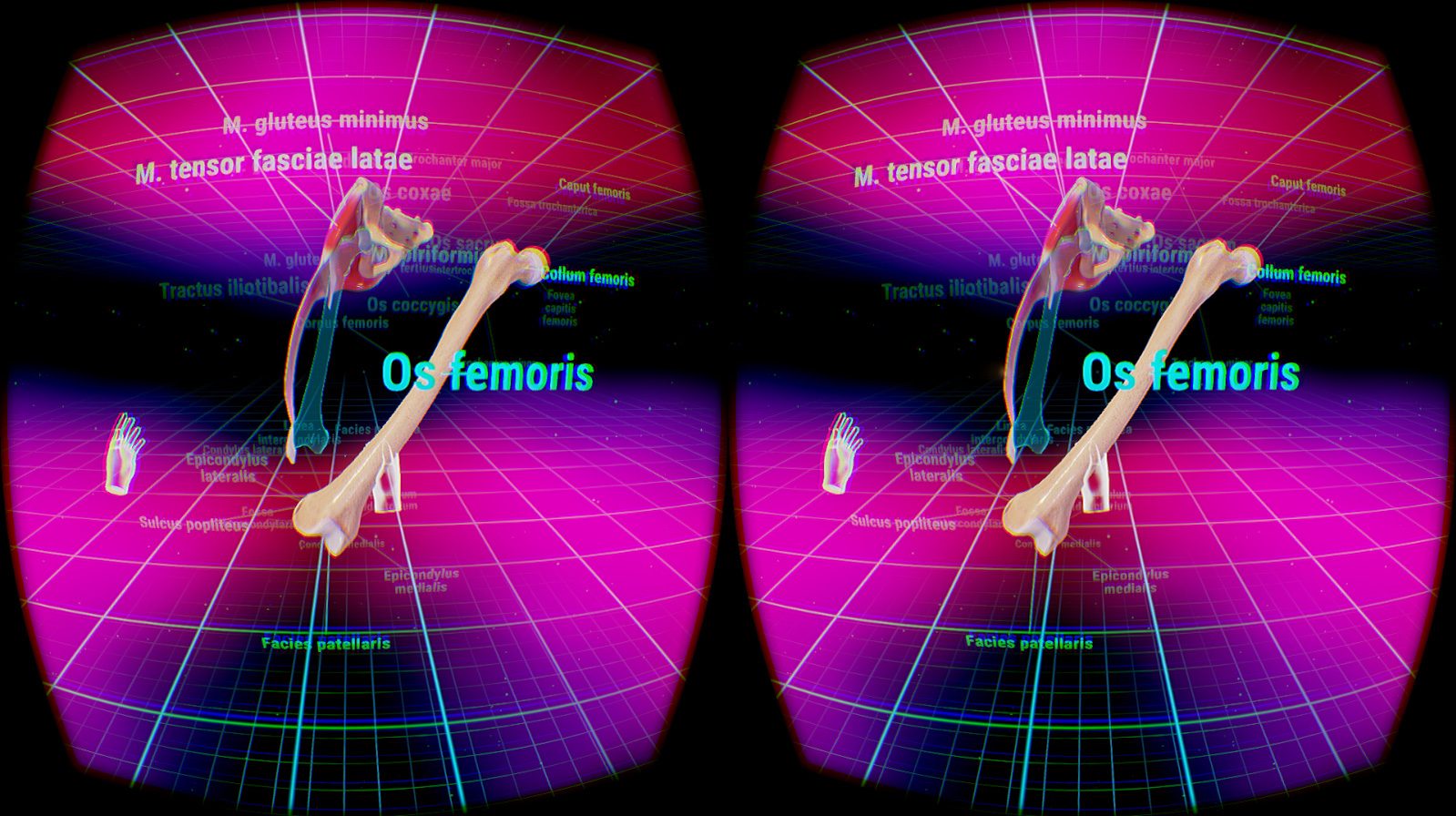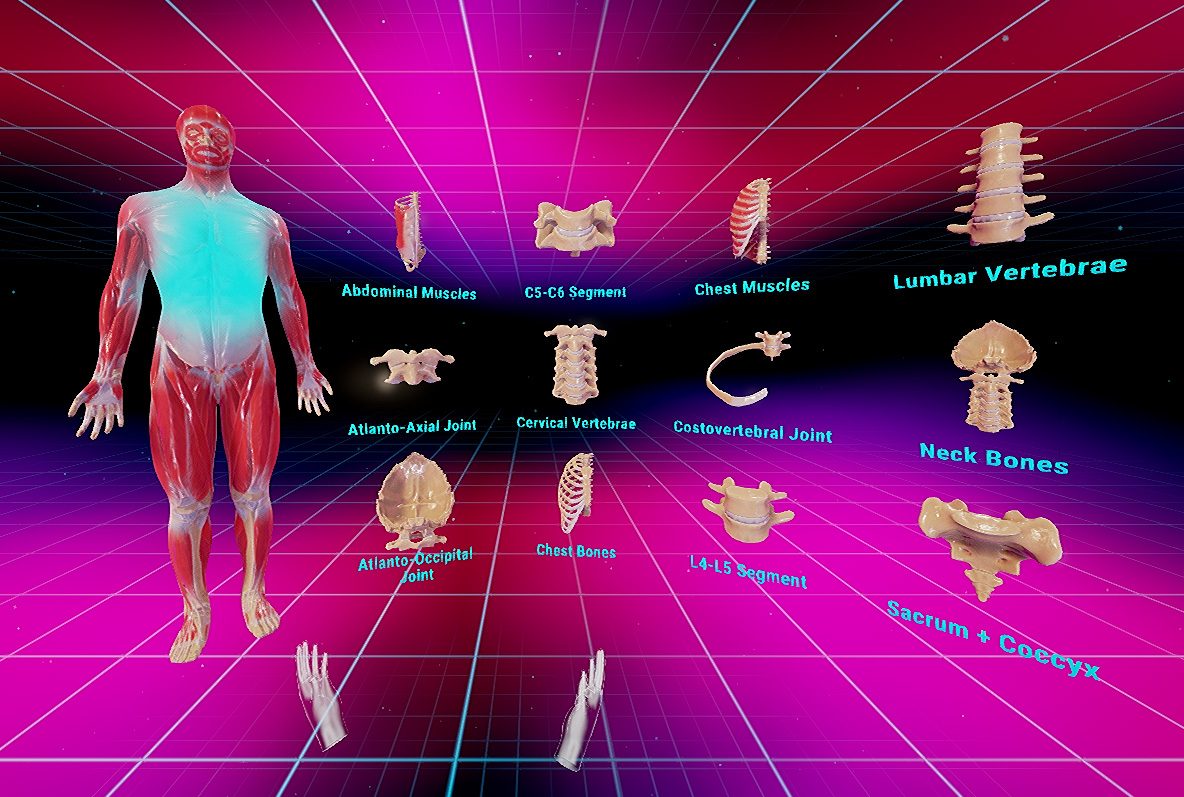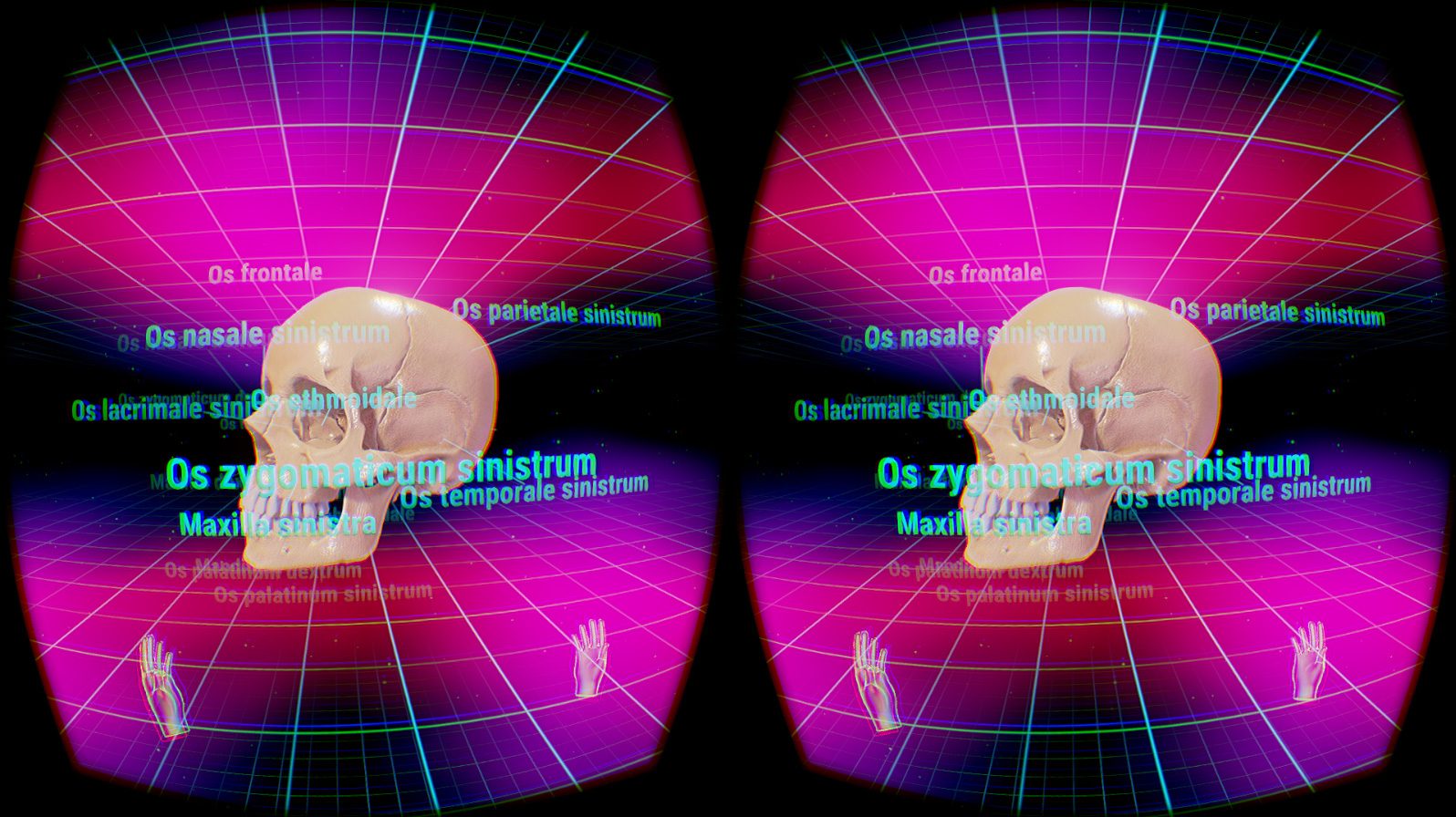Vedavi, a medical animation studio working closely with the University of Zurich, wants students to drop the heavy books and plastic models and pick up a pair of Oculus Touch controllers later this year with their highly detailed anatomy software, VR Human Anatomy.
 I spoke with Vedavi’s Managing Director and recent graduate from University of Zurich with a Master of Medicine, Moritz Schwyzer, to get a better idea of what was in store for VR Human Anatomy.
I spoke with Vedavi’s Managing Director and recent graduate from University of Zurich with a Master of Medicine, Moritz Schwyzer, to get a better idea of what was in store for VR Human Anatomy.
The software, which is touted to “overcome the stereotype of the complexity of [learning] the human anatomy,” lets you literally pick apart the human body with your hands and inspect it naturally. While it’s meticulously labeled—just like you’d find in an anatomy textbook—the added benefit here is clear: being able to manipulate the body parts from any angle is something that medical students have been doing with plastic models for years, but no such model can show you realtime interactions, or pop back into place when you’re finished with it, and you’d be hard pressed to find one that is as detailed and complete as a virtual aide like the one Schwyzer showed me.
To demonstrate, we navigated to the human skull to reveal more than six separable pieces, and more labels than I could count (or probably remember). Schwyzer maintains that the scenes are necessarily separated into smaller anatomical groups to maintain the least amount of pieces as possible so it doesn’t get too crowded.
“If you have too many labels in a scene, or too many objects, it kind of gets confusing and might get a bit difficult to read. We’re trying not to place too many per scene so it’s comfortable to study,” he told me.
The software is currently in preliminary testing at a workstation at the University of Zurich’s Faculty of Anatomy, allowing medical students to give direct feedback to the studio. Schwyzer tells me that one of the features students have been asking for the most is an interactive model of muscles that shows how they relate to the skeletal structure.
Muscle function, including animations to see how they contract, is also planned for the preliminary release. Ligaments, blood vessels, organs, the nervous system, almost everything you can think of is on the Vedavi’s ‘to do’ list however.
If you’re looking to get your hands on some human body parts (legally) it’s still unsure if the company is going to publish on the Oculus Store later this year, simply because they don’t know what sort of demand there will be for such a niche piece of software. Schwyzer tells me “it’s for sure that we’re [eventually] going to be on the Oculus Store,” and that even for the layman, “VR is actually perfect to get a quick and clean overview of all this stuff.”
Schwyzer elaborates:
“The main reason we’re developing for Oculus right now is because of the simple setup. The decision was between Oculus and SteamVR, and we chose to focus our product for Oculus because in the beginning we’re mainly going to sell the software to universities, and for them it will be easier for them to have simple workstations instead of a whole room for one student to learn anatomy.”
Preliminary release for VR Human Anatomy is slated for the second half of 2016 pending the arrival of Oculus Touch. Vedavi hasn’t signed any exclusivity deals with Oculus, so there’s no telling where they’ll take it next, whether it be mobile VR or otherwise.









